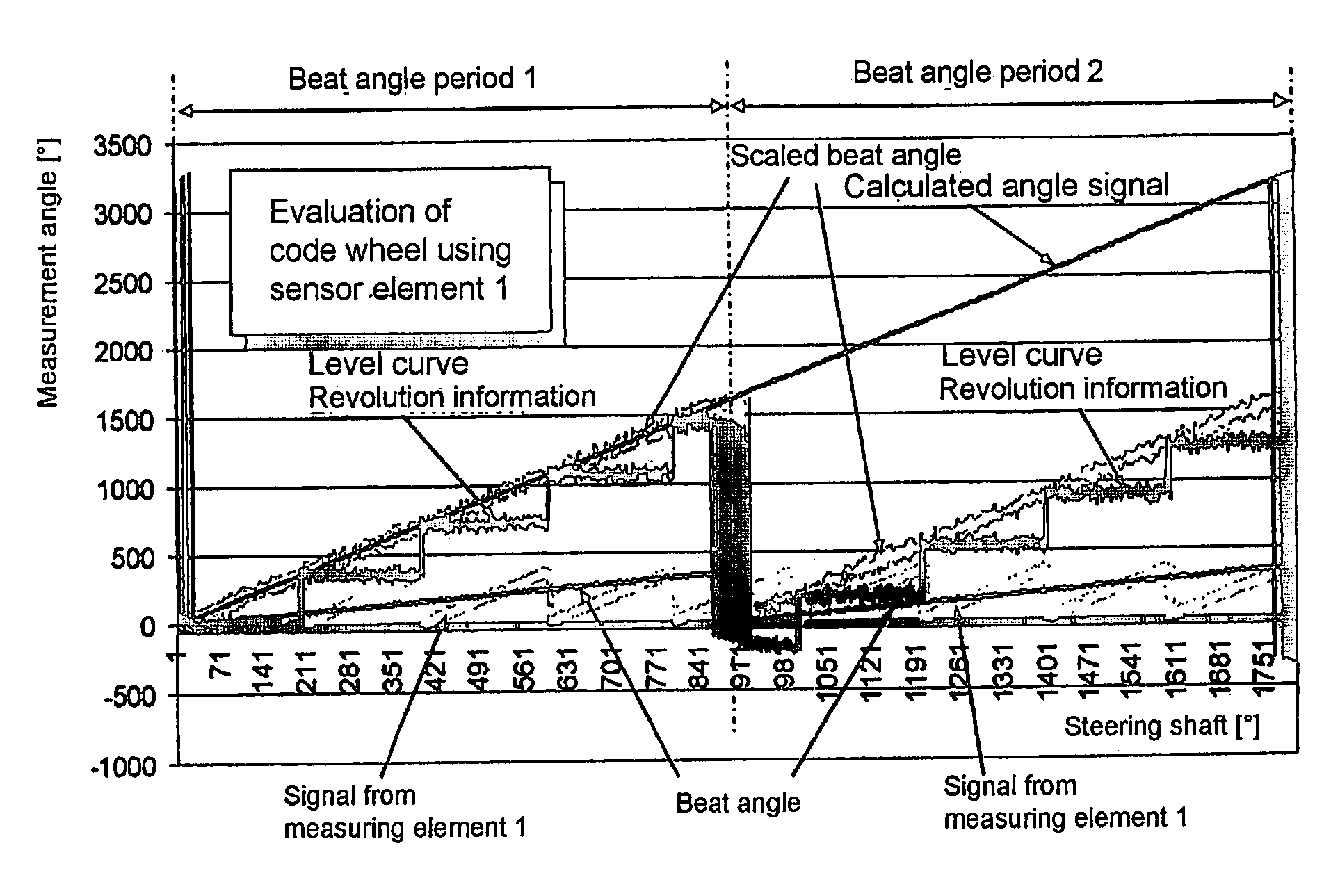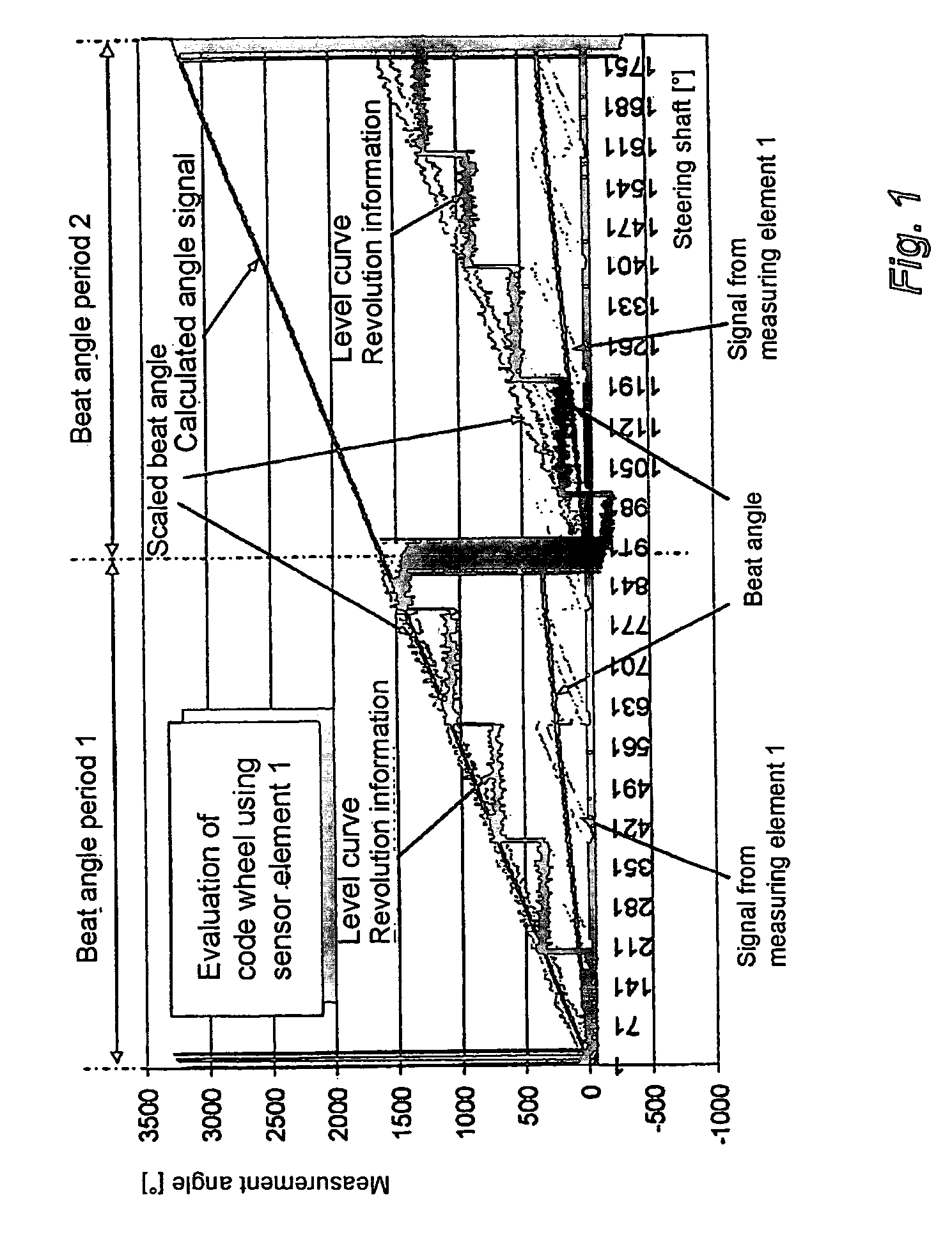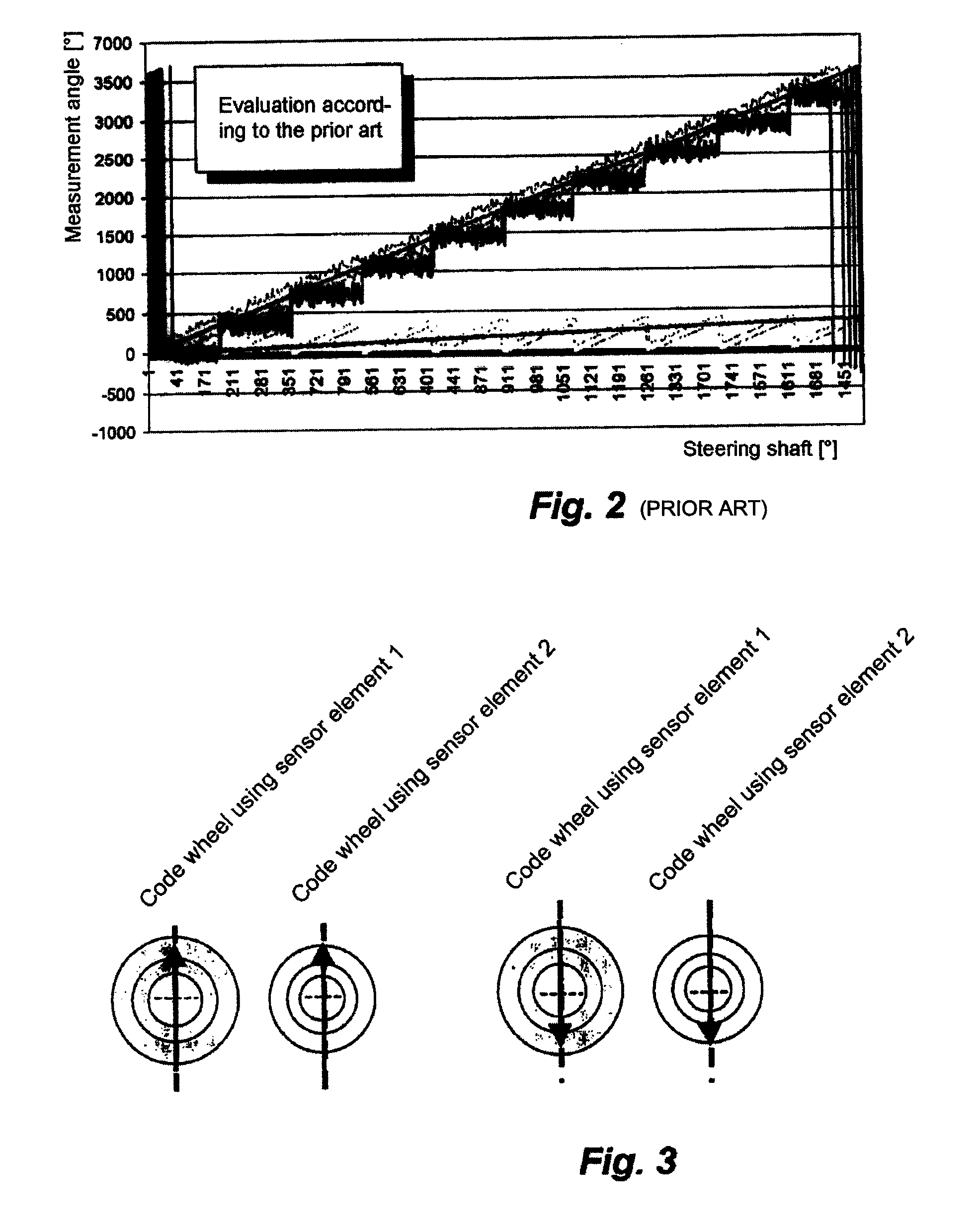Rotation angle sensor and method for determining the absolute angular position of a body undergoes several rotations
a technology of rotation angle and absolute angular position, which is applied in the direction of instruments, measuring devices, using electrical means, etc., can solve the problems of different rotational speeds, angle determination errors within the scope of plausibility checks, and reduce the effective usable measuring range. , to achieve the effect of low rotational speeds
- Summary
- Abstract
- Description
- Claims
- Application Information
AI Technical Summary
Benefits of technology
Problems solved by technology
Method used
Image
Examples
Embodiment Construction
)
[0026]Turning initially to FIGS. 4a and 4b, a magnetic steering angle sensor 10 in accordance with an embodiment of the present invention determines the absolute angular position of a rotatable body 12 (such as the steering shaft of a vehicle) which can rotate through several revolutions (e.g., 1800°). The sensor 10 determines the absolute angular position of the shaft 12 over an angular measuring range corresponding to the range of available rotation of the shaft. In this embodiment, as described in U.S. Pat. No. 5,930,905, which is hereby incorporated by reference, a drive wheel 11 engages the shaft 12 to rotate therewith and the sensor 10 includes first and second magnetically operated measuring elements. Each measuring element includes a respective code wheel 14, 16 having a respective magnet 18, 20 (i.e., a magnetic pickup element). The code wheels 14, 16 engage the drive wheel 11 (via a toothed gear ring of the drive wheel 11 and respective toothed gear rings of the code whee...
PUM
 Login to View More
Login to View More Abstract
Description
Claims
Application Information
 Login to View More
Login to View More - R&D
- Intellectual Property
- Life Sciences
- Materials
- Tech Scout
- Unparalleled Data Quality
- Higher Quality Content
- 60% Fewer Hallucinations
Browse by: Latest US Patents, China's latest patents, Technical Efficacy Thesaurus, Application Domain, Technology Topic, Popular Technical Reports.
© 2025 PatSnap. All rights reserved.Legal|Privacy policy|Modern Slavery Act Transparency Statement|Sitemap|About US| Contact US: help@patsnap.com



